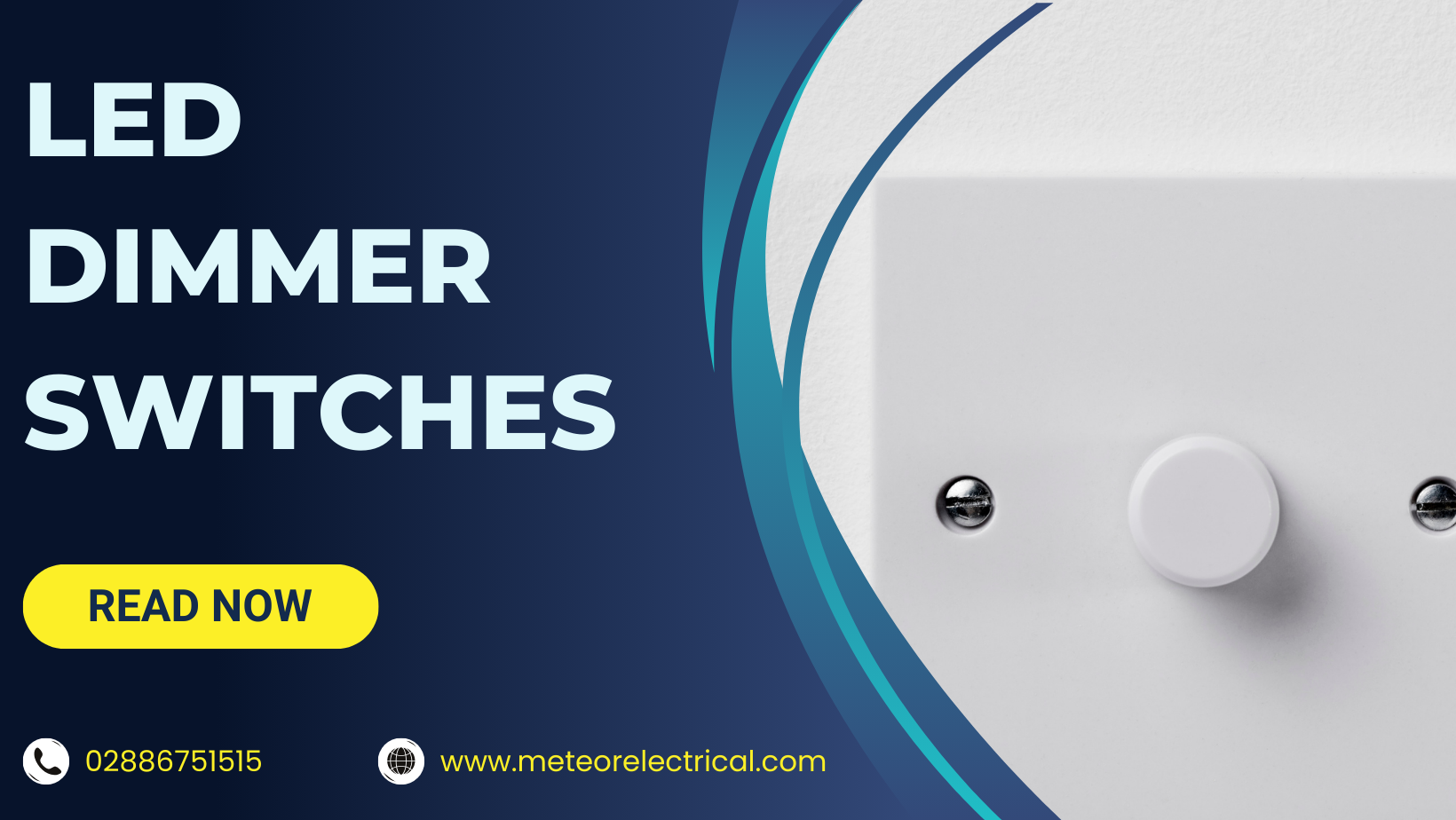Transform Your Lighting Experience: LED Dimmer Switches Explained
Transform Your Lighting Experience: LED Dimmer Switches Explained
Lighting is more than just a practical necessity—it has the power to transform your space. At Meteor Electrical, we know how important it is to create the right atmosphere, whether you're looking to energize a room or make it feel more relaxing. That's where LED dimmer switches come into play. These clever LED lights give you control over your lighting, allowing you to adjust the intensity for any situation. Whether you're hosting a party, enjoying a quiet evening, or working from home, LED dimmer switches make it easy to fine-tune your environment.
But there's more to these switches than just convenience. They’re energy-efficient, eco-friendly, and long-lasting. Let's dive into how LED dimmer switches can make a big difference for both residential and commercial spaces.
For more information on LED technology, check out the U.S. Department of Energy's guide or explore Energy Star’s tips for more ways to save on energy bills.
From Cozy to Bright: Perfect Ambiance at Your Fingertips
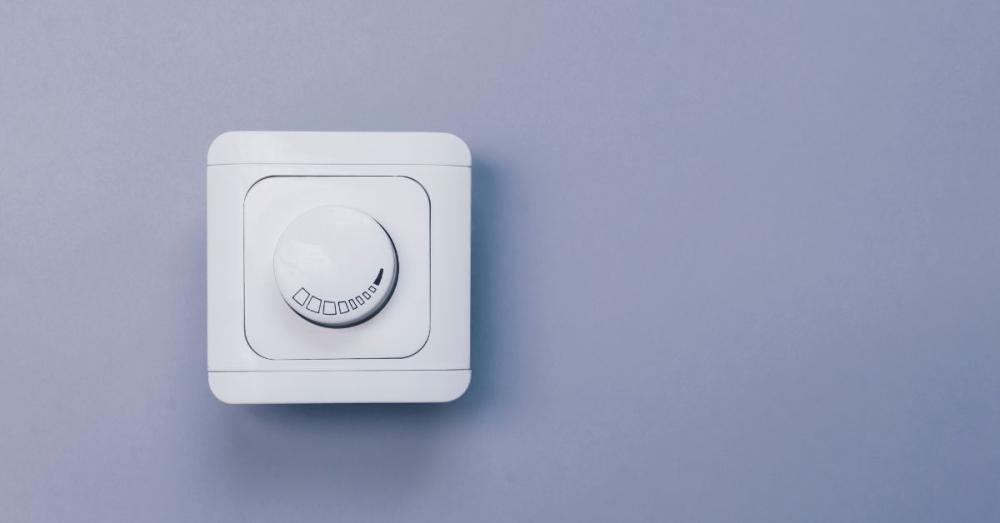
Creating the right mood is key to any setting. With an LED dimmer switch, you can easily transition from a bright, energetic atmosphere to a warm, cozy glow. Picture this: You’re hosting a dinner party and need soft lighting to set the mood, or perhaps you’re settling in with a book and need bright, focused light. With just a simple adjustment, LED dimmers offer the flexibility to get it right every time.
Boost Energy Efficiency and Comfort with LED Dimmers

LED lights are already known for being energy-efficient and long-lasting, but when combined with dimmer switches, the benefits multiply. Adjusting the brightness of your lighting helps you save even more on your electricity bills by using only the energy you need. Moreover, dimming your lights reduces wear and tear on the bulbs, extending their life. According to Energy.gov, dimming LED lights can result in significant energy savings while also helping you be more eco-conscious.
When you use LED dimmers, you're not just improving the look of your space—you're also doing your part to conserve energy and reduce your environmental footprint.
Maximizing Control with LED-Compatible Dimmers
Modern LED-compatible dimmer switches give you precise control over your lighting, allowing you to adjust brightness levels for various activities. Whether it’s a living room that needs to serve as both a relaxing lounge and a home office, or a kitchen that needs bright, task-oriented lighting, the right dimmer ensures that the room is always set for the task at hand.
One of the great things about these dimmers is that they don’t just let you turn the light down—they allow you to fine-tune the intensity to suit your needs. Want to switch from a productive, bright space to a cozy, dim atmosphere for movie night? With LED dimmers, it’s effortless.
Credit: eFIXX
What You Need to Know About LED Dimmer Compatibility
While LED dimmers are fantastic, they need to be paired with the right components to work properly. Not all LED bulbs are compatible with dimmer switches, and using the wrong setup can result in flickering, reduced bulb life, or even complete malfunction. Here's what you need to check for:
- Dimmable LED bulbs: Not all LED bulbs can be dimmed, so look for bulbs specifically labeled as dimmable.
- Correct dimmer type: Ensure the dimmer switch is designed to handle LED technology. Older dimmers designed for incandescent or halogen bulbs might not be suitable.
- Power levels: LEDs use much less power than traditional bulbs, so you need dimmers optimized for low wattage. This will ensure the dimmer works smoothly without causing problems like buzzing or flickering.
For more information on LED dimmer compatibility, you can check out this guide from U.S. Department of Energy.
Do You Need a Special Dimmer Switch for LED Lights?
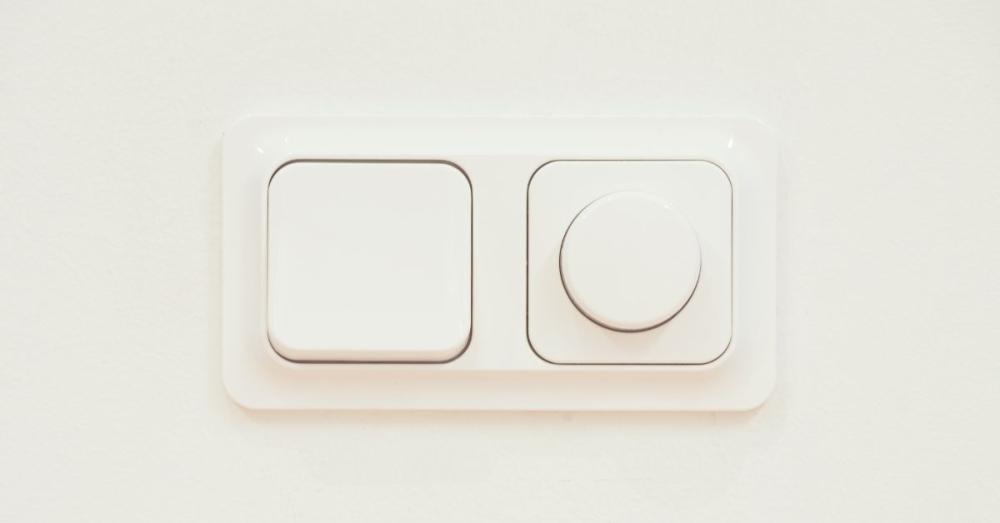
Yes, you do. Traditional dimmer switches aren't equipped to handle the unique electrical characteristics of LED lights. Incandescent dimmers work by reducing the voltage, but LED lights require more precise modulation of the electrical current. Without the right dimmer, you may experience issues like buzzing, flickering, or even shortened bulb life. Make sure you choose dimmer switches that are specifically designed for LED technology to ensure smooth, reliable performance.
LED Dimmer vs. Standard Dimmer: What’s the Difference?
The key difference between LED dimmers and standard dimmers is how they control the light. Standard dimmers were designed for incandescent bulbs, which use a different electrical current than LED lights. They adjust the voltage, but that doesn't work as effectively with LED bulbs.
In contrast, LED dimmers use advanced technology to control the current more precisely, allowing for smooth dimming and energy efficiency. This makes them more suited for LED lighting systems, ensuring you get optimal performance.
Can You Put a Dimmer Switch on LED Lights?
Yes, you can! But there’s a catch—only if you’re using dimmable LED bulbs and compatible dimmer switches. If both your bulbs and dimmer switch are designed to work together, you’ll enjoy smooth dimming, energy savings, and a longer lifespan for both your lights and dimmer.
It’s important to check that both parts are compatible before installation to avoid issues like flickering or buzzing. When done right, dimming your LED lights becomes a seamless experience.
Can LED Lights Be Used with a Dimmer Switch?
Absolutely! LED lights can work with a dimmer switch, but you need to ensure both the lights and the switch are designed for this purpose. Using incompatible parts can result in problems such as flickering, buzzing, or poor performance. So, make sure you verify that your LED bulbs are dimmable and that your dimmer switch is suitable for LED technology.
Dimmable vs. Non-Dimmable LEDs
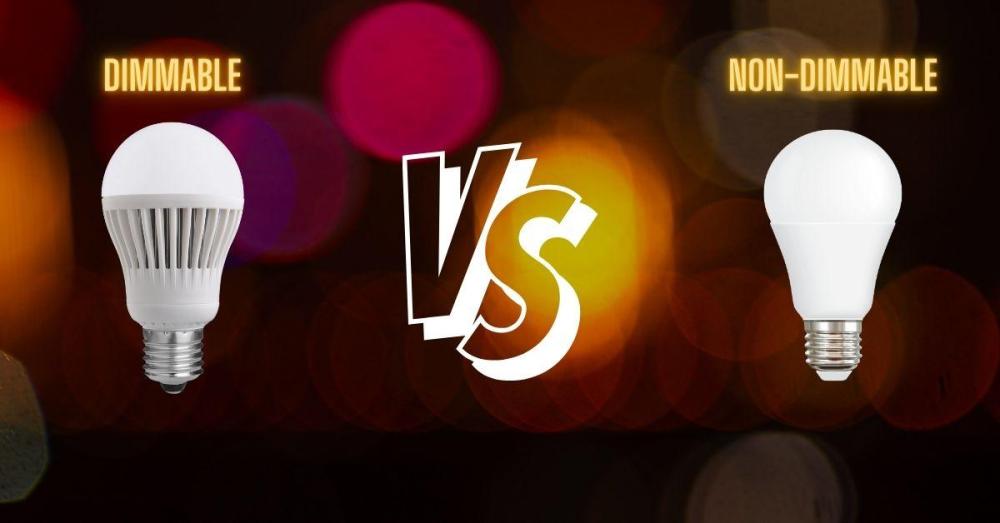
Understanding the difference between dimmable and non-dimmable LED bulbs is essential for achieving your desired lighting effects and ensuring bulb longevity.
Dimmable LEDs
- Advanced Driver Components: These bulbs feature sophisticated drivers that manage electrical current, allowing smooth and seamless dimming.
- Versatile Lighting Options: From vibrant brightness to soft glows, dimmable LEDs offer a range of lighting atmospheres suitable for various settings.
- Energy Efficiency: Lower brightness levels mean reduced energy consumption, saving you money and benefiting the environment (Energy Makeovers).
- Extended Lifespan: Dimming reduces electrical stress and heat generation, prolonging bulb life.
Non-Dimmable LEDs
- Fixed Brightness: These bulbs operate at a constant brightness and cannot be dimmed, limiting their flexibility.
- Potential Damage: Using non-dimmable LEDs with a dimmer switch can cause flickering, buzzing, or complete bulb failure.
- Limited Use Cases: Best suited for areas requiring consistent lighting, such as utility rooms or outdoor fixtures.
How Dimmer Switches Work
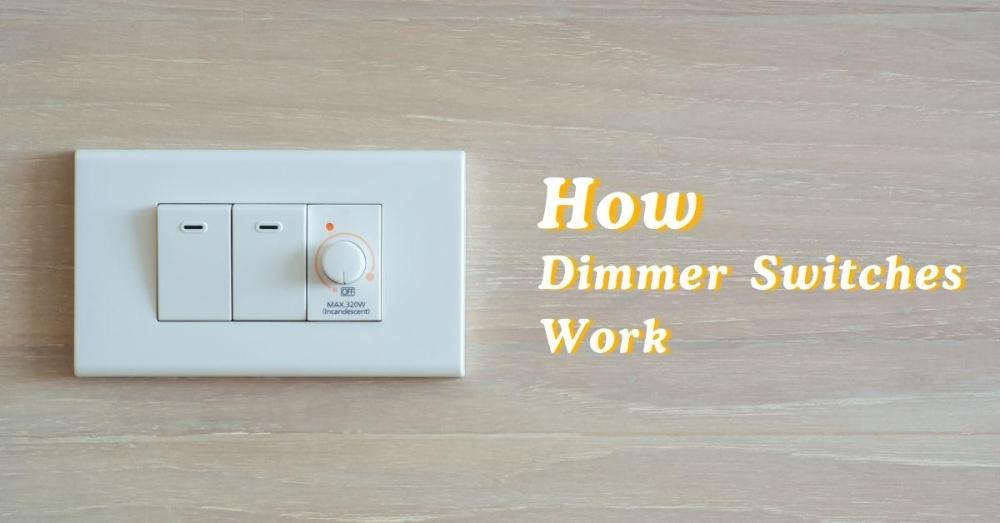
Understanding the mechanics behind dimmer switches can help you optimise your lighting setup for the best performance and ambiance (How Stuff Works).
Power Adjustment
Dimmer switches control the brightness of your lights by modifying the amount of power supplied to the bulb. This adjustment allows you to achieve the desired light level, whether it’s bright and energising or dim and relaxing.
Waveform Modification
Dimmer switches adjust brightness by altering the electrical waveform. There are two primary methods:
Leading Edge Dimming:
- How It Works: Cuts the front part of the electrical waveform.
- Common Usage: Typically used with incandescent and halogen bulbs.
- Drawbacks: Can cause flickering or buzzing when used with LEDs.
Trailing Edge Dimming:
- How It Works: Cuts the back part of the waveform.
- LED Compatibility: Ideal for LED lights due to smoother operation.
- Benefits: Provides better control and reduces flickering or buzzing, making it perfect for modern lighting setups.
How Stuff Works offers an in-depth explanation of how dimmer switches function and their impact on your lighting system.
Credit: The Home Depot
Additional Benefits of Dimmer Switches
- Energy Efficiency: Lower power consumption leads to reduced electricity bills. Even slight dimming can result in significant energy savings over time.
- Extended Bulb Lifespan: By reducing electrical load and heat generation, dimmers help extend the life of your bulbs, particularly LEDs.
- Enhanced Ambiance: Adjust brightness to create the perfect atmosphere for any occasion, whether it’s a bright light for reading or a soft glow for relaxing.
- Silent Operation: Modern trailing edge dimmers operate quietly, eliminating the buzzing sounds associated with older dimmer technologies.
Compatibility Considerations
Ensure that your dimmer switch is specifically designed for LED technology to avoid performance issues. Incompatible dimmers can lead to flickering, buzzing, and reduced bulb lifespan, undermining the benefits of your LED lighting system.
How to Choose the Best Dimmer for Your LED Bulbs
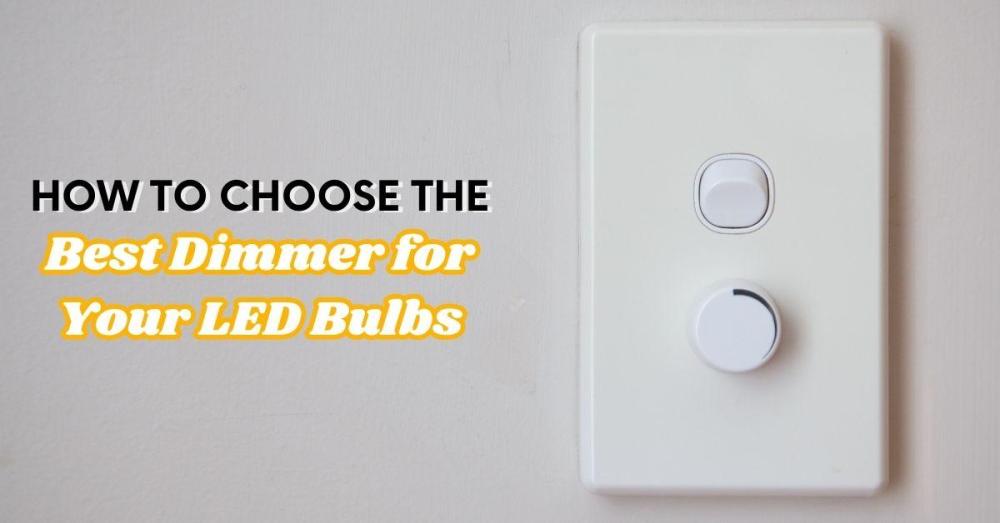
Selecting the right dimmer switch is crucial for optimising your LED lighting system. Here’s what to consider:
LED Dimmers vs. Regular Dimmer Switches
LED Dimmer Switches:
- Compatibility: Designed specifically for LED bulbs.
- Energy Efficiency: Optimised power usage enhances energy savings.
- Performance: Provides stable, flicker-free dimming.
- Lifespan Impact: Reduces junction temperature, extending bulb life.
- Noise Level: Operates quietly without buzzing.
- Heat Emission: Lower heat output benefits bulb longevity.
- Installation: May require a three-wire configuration for enhanced stability.
- Cost Savings: Long-term savings through energy efficiency and bulb longevity.
Regular Dimmer Switches:
- Compatibility: Primarily designed for incandescent and halogen bulbs.
- Energy Efficiency: Less efficient with LED bulbs.
- Performance: May cause flickering or buzzing when used with LEDs.
- Lifespan Impact: Can reduce bulb lifespan if not compatible.
- Noise Level: Can produce noise with non-compatible bulbs.
- Heat Emission: Higher heat output, less beneficial for bulb lifespan.
- Installation: Typically uses two-wire or older configurations.
- Cost Savings: Less effective for energy savings with LEDs.
| Feature | LED Dimmer Switches | Standard (Incandescent/Regular) Dimmer Switches |
|---|---|---|
| Compatibility | Specifically designed for LED bulbs and LED strip lights. | Primarily designed for incandescent and halogen bulbs. |
| Energy Efficiency | Highly energy-efficient, optimised for low wattage LEDs. | Less energy-efficient with LED bulbs, optimised for higher wattage. |
| Performance | Provides stable, flicker-free dimming with smooth transitions. | May cause flickering or buzzing when used with LED bulbs. |
| Lifespan Impact | Extends bulb lifespan by reducing electrical stress. | Can reduce LED bulb lifespan if used improperly. |
| Noise Level | Operates quietly without buzzing. | Can produce noticeable noise when dimming LED bulbs. |
| Heat Emission | Lower heat output, beneficial for LED longevity. | Higher heat output, less ideal for LED bulbs. |
| Installation | May require a three-wire configuration for enhanced stability. | Typically uses two-wire or older configurations. |
| Cost Savings | Leads to long-term savings through energy efficiency and bulb longevity. | Less effective for energy savings with LED bulbs. |
| Universal Compatibility | Can handle various LED light sources, including bulbs and strips. | Generally limited to incandescent and halogen light sources. |
| Advanced Features | Often includes features like programmable settings and smart home integration. | Usually lacks advanced features, focusing solely on dimming. |
Lifespan of LED Bulbs
Extended Lifespan:
- Benefits: Dimming reduces junction temperature, leading to longer bulb life. Lower heat emission from dimming is beneficial for LEDs.
Potential Wear:
- Consideration: While dimming generally extends bulb life, frequent adjustments may slightly wear out some LED bulbs faster. However, overall, dimming contributes positively to LED longevity.
Incandescent vs. LED Bulbs with Dimmers
Incandescent Bulbs:
- Compatibility: Typically compatible with phase-control dimmers.
- Issues: Can cause flickering, noise, and energy waste if not matched correctly.
LED Bulbs:
- Compatibility: Require specific dimmers designed for LED technology.
- Issues: Incompatible dimmers can lead to performance problems like flickering and reduced lifespan.
By choosing the right dimmer switch for your LED bulbs, you ensure enhanced energy efficiency, better performance, and extended lifespan of your lighting system. Always verify compatibility to achieve optimal results.
Benefits of Dimmer Switches
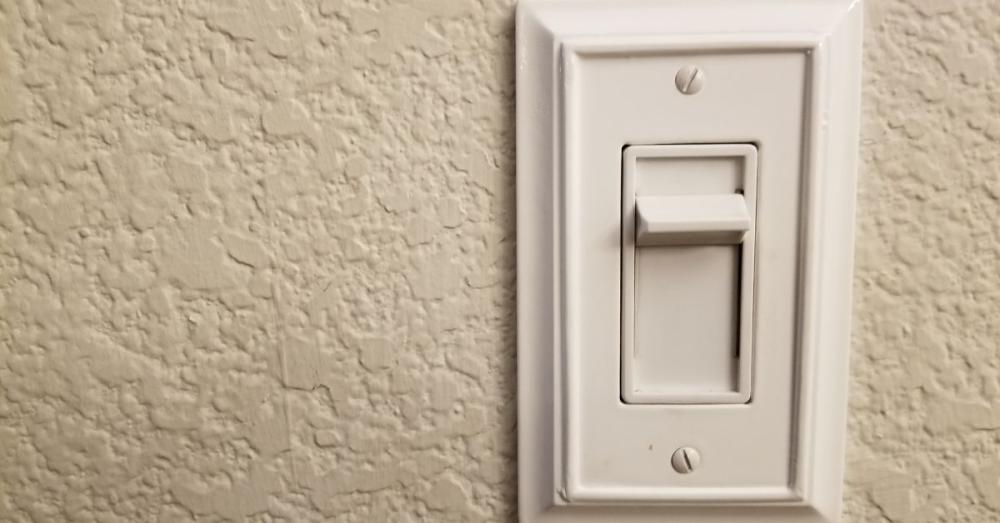
Installing dimmer switches can revolutionise your lighting system, offering a host of benefits that go beyond simple brightness control.
Increased Flexibility
- Activity Adaptability: Easily adjust lighting levels for different activities such as reading, dining, or relaxing.
- Mood Setting: Create the perfect ambiance for any occasion, from cosy evenings to lively gatherings.
Extended Product Life
- Reduced Wear and Tear: Dimming reduces the electrical load, minimising stress on the bulb's components.
- Lower Maintenance Costs: Longer-lasting bulbs mean fewer replacements and lower maintenance expenses.
Energy Efficiency
- Lower Energy Consumption: Dimmed lights use less power, leading to noticeable savings on electricity bills.
- Eco-Friendly: Reduced energy usage contributes to a smaller carbon footprint, benefiting the environment.
Enhanced Comfort
- Glare Reduction: Dimming helps reduce harsh glare, making spaces more comfortable for the eyes.
- Customisable Atmosphere: Tailor the lighting to suit your personal comfort and aesthetic preferences.
Improved Control
- Precision Lighting: Fine-tune the brightness to achieve the exact lighting level you desire.
- Versatile Applications: Suitable for various rooms and settings, from living spaces to work environments.
By integrating dimmer switches, you can enhance your lighting control and enjoy multiple benefits that improve your home’s functionality and energy efficiency.
Key Takeaways
LED dimmer switches are a fantastic way to elevate your lighting system, offering enhanced functionality and versatility. Before you install a dimmer switch, keep these key points in mind:
- Check Compatibility: Always verify that your LED bulbs are dimmable. Look for labels or check product specifications to ensure compatibility with dimmer switches.
- Invest in Quality: While dimmable LEDs may have a slightly higher upfront cost, their benefits in energy savings, extended lifespan, and versatility make them a worthwhile investment.
- Seek Professional Advice: If you're unsure about compatibility or installation, consult with lighting professionals or electricians. They can recommend the best bulbs and dimmer switches for your specific needs, ensuring a seamless and hassle-free lighting experience.
By understanding the differences between dimmable and non-dimmable LED bulbs, you can make informed decisions that enhance your lighting setup, provide greater flexibility, and ensure long-term satisfaction with your home or business lighting.
Conclusion
Transform your space with LED dimmer switches from Meteor Electrical. Whether you're aiming for the perfect lighting ambiance, looking to save on energy costs, or wanting to extend the lifespan of your bulbs, our range of LED dimmers has everything you need. Brighten up your home or office the way you've always dreamed, and take control of your lighting experience today.
Ready to make the switch? Check out Meteor Electrical for more info on how LED dimmer switches can work for you!
FAQs
1. Can you use a dimmer switch on LED lights?
Yes, as long as you use dimmable LED bulbs and compatible dimmer switches.
2. What are the benefits of using dimmer switches with LED lights?
Dimmer switches offer flexible lighting control, energy efficiency, and extended bulb lifespan.
3. Are all LED bulbs compatible with dimmer switches?
No, only dimmable LED bulbs are compatible with dimmer switches.
4. How can I ensure compatibility between my LED bulbs and dimmer switch?
Check the product specifications or manufacturer’s website to confirm compatibility.
5. Do dimmer switches save energy?
Yes, by reducing the brightness, dimmer switches lower energy consumption and save on electricity bills.
6. Can dimming LED lights affect their lifespan?
Yes, dimming LED lights can extend their lifespan by reducing the electrical load and heat generation.

